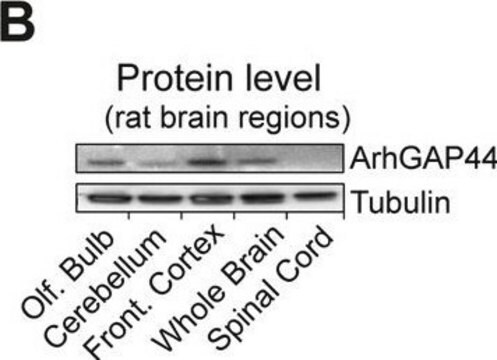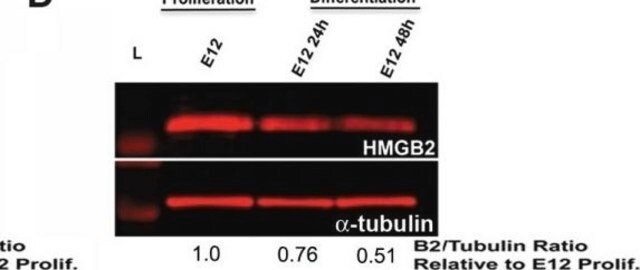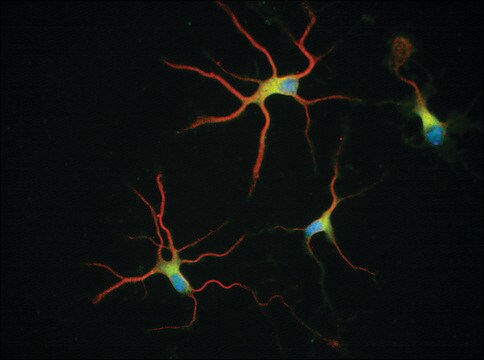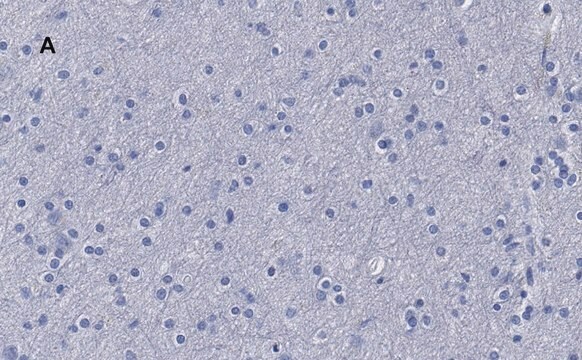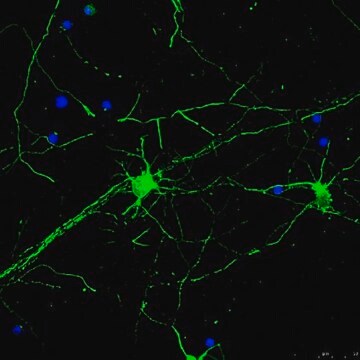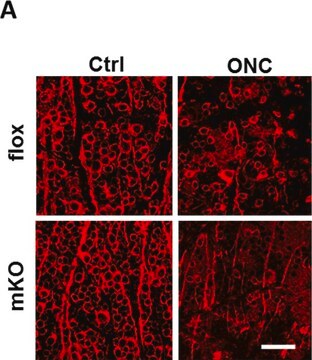T2200
Anti-β-Tubulin III Antibody

rabbit polyclonal
Synonyme(s) :
Anti-Tuj 1
About This Item
Produits recommandés
Nom du produit
Anti-β-Tubulin III antibody produced in rabbit, affinity isolated antibody, buffered aqueous solution
Source biologique
rabbit
Conjugué
unconjugated
Forme d'anticorps
affinity isolated antibody
Type de produit anticorps
primary antibodies
Clone
polyclonal
Forme
buffered aqueous solution
Poids mol.
antigen ~55 kDa
Espèces réactives
rat, human, mouse
Validation améliorée
knockout
Learn more about Antibody Enhanced Validation
Technique(s)
immunoprecipitation (IP): 10 μg using RIPA extract (250 μg) of cultured rat PC12 cells
indirect immunofluorescence: 10-20 μg/mL using rat PC12 cells
western blot: 0.2-0.4 μg/mL using whole extracts of mouse brain or cultured human neuroblastoma SH-SY5Y cells
Numéro d'accès UniProt
Conditions d'expédition
dry ice
Température de stockage
−20°C
Modification post-traductionnelle de la cible
unmodified
Informations sur le gène
human ... TUBB3(10381)
mouse ... Tubb3(22152)
rat ... Tubb3(246118)
Vous recherchez des produits similaires ? Visite Guide de comparaison des produits
Description générale
α/β-Tubulin, an integral component of microtubules, is present in almost all eukaryotic cells.
α/β-Tubulin occurs mostly as soluble (approx. 100-110 kDa) heterodimeric sets of α- and β-tubulin isotypes or as polymers in assembled microtubules. β-Tubulin III (also designated β-4 chain) is found in the brain and dorsal root ganglia and appears to be localized to neurons of the central and peripheral nervous system. β-tubulin III is also found in Sertoli cells of the testis, spermatozoa tails, certain lung cells, and apparently some breast stromal cells.
Spécificité
Immunogène
Application
- Immunofluorescence
- Immunostaining
- Western blotting
- immunofluorescence
- immunostaining
- western blotting
- indirect immunoperoxidase assay (IPA)
Actions biochimiques/physiologiques
Forme physique
Notes préparatoires
For extended storage, freeze in working aliquots. Repeated freezing and thawing is not recommended. Storage in frost-free freezers is also not recommended. If slight turbidity occurs upon prolonged storage, clarify the solution by centrifugation before use. Working dilutions should be discarded if not used within 12 hours.
Autres remarques
Clause de non-responsabilité
Vous ne trouvez pas le bon produit ?
Essayez notre Outil de sélection de produits.
Produit(s) apparenté(s)
Code de la classe de stockage
12 - Non Combustible Liquids
Classe de danger pour l'eau (WGK)
WGK 1
Point d'éclair (°F)
Not applicable
Point d'éclair (°C)
Not applicable
Faites votre choix parmi les versions les plus récentes :
Déjà en possession de ce produit ?
Retrouvez la documentation relative aux produits que vous avez récemment achetés dans la Bibliothèque de documents.
Les clients ont également consulté
Notre équipe de scientifiques dispose d'une expérience dans tous les secteurs de la recherche, notamment en sciences de la vie, science des matériaux, synthèse chimique, chromatographie, analyse et dans de nombreux autres domaines..
Contacter notre Service technique